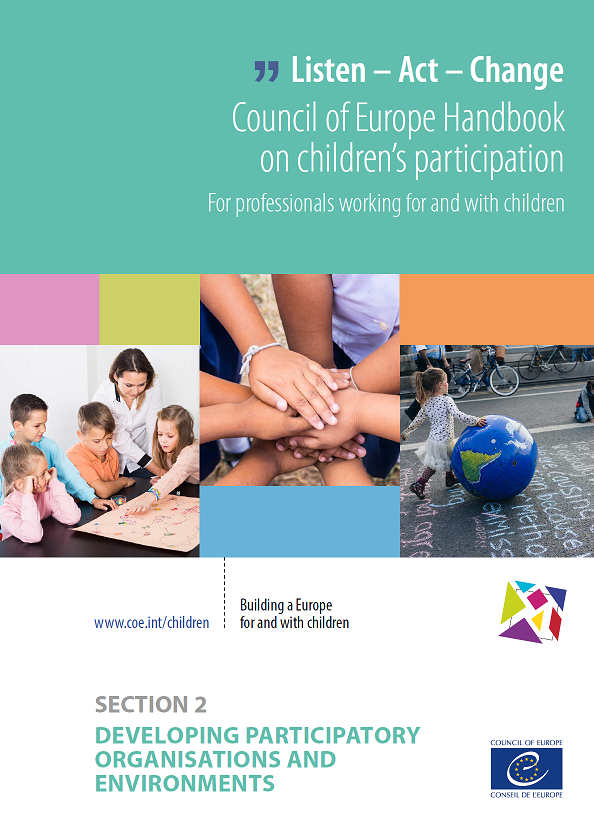Handbook on Children's Participation Section 2 - Developing participatory organisations and environments
Description
This section of the Handbook focuses on the organisations or systems within which professionals work – for example, schools, early childhood education centres, hospitals, health clinics, offices, justice and child protection systems. It explores how organisations and systems can be adapted or changed to create more respectful spaces for children to be able to express their views with trust and confidence and how to strengthen capacity for participation.
Date
List people or organisations involved in producing the resource
Council of Europe
Purpose
Building Participatory Environments
Age range of target people
0-8 years
9-12 years
13-15 years
16-18 years
Characteristics of children and groups
All children
Care experience
Living in poverty
Living with violence
Living rurally
Living in a city
Contact with the criminal justice system
Young carers
Refugees, asylum seekers, undocumented migrants
Ethnic, religious, linguistic minorities
LGBTQI+
Roma, Sinti, Travellers
Persons with disabilities
Boys
Girls
Modes of participation
Consultative
Collaborative
Child-led
Phases in cycle of participation
Planning
Connecting with Children
Identifying Issues and Priorities
Investigating Children's Views
Taking Action
Following-up on Actions
Evaluating and Sharing

Category of content
A resource
Skills trained
Facilitation and Training
Evaluation
Organising
Consulting
Profile of target group
Artists & Cultural Operators
Healthcare Professionals (Doctors, Nurses, Community Health)
Educators (e.g. teachers)
Social Workers
Youth Workers
Type of resource
electronic publication (PDF)
Target group's degree of knowledge
Beginner